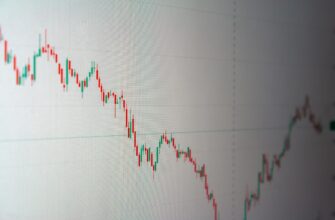🎁 Get Your Free $RESOLV Tokens Today!
💎 Exclusive Airdrop Opportunity!
🌍 Be part of the next big thing in crypto — Resolv Token is live!
🗓️ Registered users have 1 month to grab their airdrop rewards.
💸 A chance to earn without investing — it's your time to shine!
🚨 Early adopters get the biggest slice of the pie!
✨ Zero fees. Zero risk. Just pure crypto potential.
📈 Take the leap — your wallet will thank you!
- What Is RSI and Why Does It Matter for XRP Traders?
- How RSI Works: The Mechanics Behind the Indicator
- Applying RSI to XRP Trading: Practical Strategies
- Avoiding Common RSI Pitfalls With XRP
- Advanced RSI Techniques for XRP
- FAQ: Your XRP RSI Questions Answered
- What’s the best RSI setting for XRP day trading?
- Can RSI predict XRP price bottoms?
- Why does XRP RSI sometimes give false signals?
- How reliable is RSI during XRP bull runs?
- Should I use RSI for long-term XRP investing?
- Mastering RSI for XRP Success
What Is RSI and Why Does It Matter for XRP Traders?
The Relative Strength Index (RSI) is a crucial momentum oscillator that measures the speed and change of price movements. For XRP traders, RSI serves as an essential tool to identify overbought or oversold conditions, potentially signaling trend reversals. Developed by J. Welles Wilder, RSI ranges from 0 to 100 and is typically calculated over 14 periods. When applied to XRP – the digital asset powering Ripple’s payment network – this indicator helps cut through market noise, providing actionable insights amid cryptocurrency volatility.
How RSI Works: The Mechanics Behind the Indicator
RSI compares the magnitude of recent gains to recent losses over a specified period. The formula involves two key steps:
- Calculate Average Gain and Loss: For 14 periods (default), sum all gains and divide by 14, then repeat for losses.
- Compute RSI Value: RSI = 100 – [100 / (1 + (Average Gain / Average Loss))]
Key thresholds to watch:
- Overbought: RSI ≥ 70 suggests potential pullback
- Oversold: RSI ≤ 30 indicates possible rebound
Applying RSI to XRP Trading: Practical Strategies
XRP’s unique price behavior – often influenced by regulatory news and partnership announcements – makes RSI particularly valuable. Here’s how to leverage it:
- Divergence Trading: When XRP price makes higher highs but RSI makes lower highs (bearish divergence), or vice versa (bullish divergence), it often precedes reversals.
- Overbought/Oversold Bounces: In ranging markets, buy near RSI 30 with stop-loss below support, sell near RSI 70 with stop above resistance.
- Trend Confirmation: In strong uptrends, RSI may hover near 70 without immediate reversal – use trendlines for validation.
Avoiding Common RSI Pitfalls With XRP
RSI missteps can be costly in crypto markets. Steer clear of these errors:
- Ignoring Market Context: During XRP’s parabolic rallies (e.g., 2017 bull run), RSI can stay overbought for weeks. Combine with volume analysis.
- Using Defaults Blindly: Adjust RSI periods: Shorter (e.g., 10) for day trading, longer (e.g., 25) for swing trading XRP.
- Overlooking False Signals: Major news events (like SEC lawsuits) can override technical indicators – always check fundamentals.
Advanced RSI Techniques for XRP
Elevate your strategy with these professional approaches:
- RSI Swing Rejections: Spot when RSI exits overbought/oversold territory – e.g., falls below 70 after a peak, signaling sell opportunity.
- Multi-Timeframe Analysis: Check weekly RSI for trend direction, then use 4-hour RSI for entry timing.
- RSI + Moving Averages: Confirm RSI signals with 50-day and 200-day EMAs – e.g., buy when oversold RSI aligns with EMA support.
FAQ: Your XRP RSI Questions Answered
What’s the best RSI setting for XRP day trading?
Most traders use 10-14 periods for intraday XRP trades. Test settings against historical data – shorter periods increase sensitivity to volatility.
Can RSI predict XRP price bottoms?
While RSI identifies oversold conditions, it shouldn’t be used alone. Combine with support levels, volume spikes, and bullish candlestick patterns for higher-probability entries.
Why does XRP RSI sometimes give false signals?
Sudden regulatory news or whale movements can distort RSI readings. Always verify signals with other indicators like MACD or Bollinger Bands®.
How reliable is RSI during XRP bull runs?
In strong uptrends, RSI may remain above 70 for extended periods. Focus on trend-following strategies rather than counter-trend RSI signals during momentum phases.
Should I use RSI for long-term XRP investing?
For multi-month holds, weekly or monthly RSI charts provide better macro insights. Values below 30 on weekly charts often indicate accumulation zones.
Mastering RSI for XRP Success
Integrating RSI into your XRP trading toolkit empowers you to navigate crypto volatility with data-driven confidence. Remember: no indicator is infallible. Backtest strategies using historical XRP data, combine RSI with fundamental analysis of Ripple’s developments, and always manage risk with stop-loss orders. As markets evolve, continuous learning and adaptation will transform RSI from a simple oscillator into your strategic edge in the dynamic world of XRP trading.
🎁 Get Your Free $RESOLV Tokens Today!
💎 Exclusive Airdrop Opportunity!
🌍 Be part of the next big thing in crypto — Resolv Token is live!
🗓️ Registered users have 1 month to grab their airdrop rewards.
💸 A chance to earn without investing — it's your time to shine!
🚨 Early adopters get the biggest slice of the pie!
✨ Zero fees. Zero risk. Just pure crypto potential.
📈 Take the leap — your wallet will thank you!








